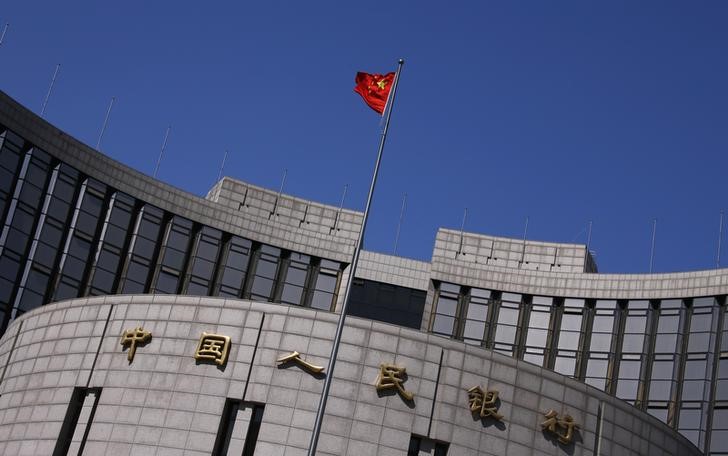Investing.com– The People’s Bank of China kept its benchmark loan prime rate unchanged at record lows on Friday, as recent data showed that a string of recent stimulus measures were helping spur an economic recovery.
The PBOC kept its at 3.45%, while the , which is used to determine mortgage rates, was left unchanged at 4.20%. Both rates were at historic lows, after three cuts over the past year.
The central bank was widely expected to keep rates on hold given that it left its medium-term lending rates unchanged last week.
The LPR is determined by the PBOC based on considerations from 18 designated commercial banks, and is used as a benchmark for interest rates in the country.
Friday’s move comes after data earlier this week showed that China’s in the third quarter. Year-to-date growth also stood at 5.2%, above the government’s 5% forecast for 2023.
While the PBOC has doled out a slew of liquidity injections this year, it has also remained somewhat conservative in trimming the LPR, as it seeks to maintain a balance between facilitating economic growth and maintaining strength in the .
The Chinese currency is among the worst performing global currencies this year, as it came under pressure from increasing doubts over an economic rebound.
While China’s economy grew more than expected in recent quarters, growth still remained largely below pre-COVID levels as manufacturing activity stalled and capital investment dried up.
Beijing has rolled out a slew of measures aimed at attracting foreign investment and fostering local spending, including cutting mortgage rates and loosening curbs on capital issuances. While the measures have borne some fruit in recent months, growth has still disappointed investors hoping for a bigger economic rebound this year.
Concerns over a default in China’s massive property sector have also remained largely in play, as embattled developer Country Garden appeared to have missed a key repayment deadline on its offshore bonds, triggering fears of a widespread default. Chinese stock markets suffered steady losses on these fears, and have also largely lagged their global peers this year.
The PBOC recently rolled out its biggest liquidity injection since 2020, aimed chiefly at supporting local banks amid growing concerns over inflated debt levels. Its holding of the LPR also appeared to be aimed at protecting local banks, given that any further reductions in lending rates will further compress already strained lending margins.
Read the full article here




